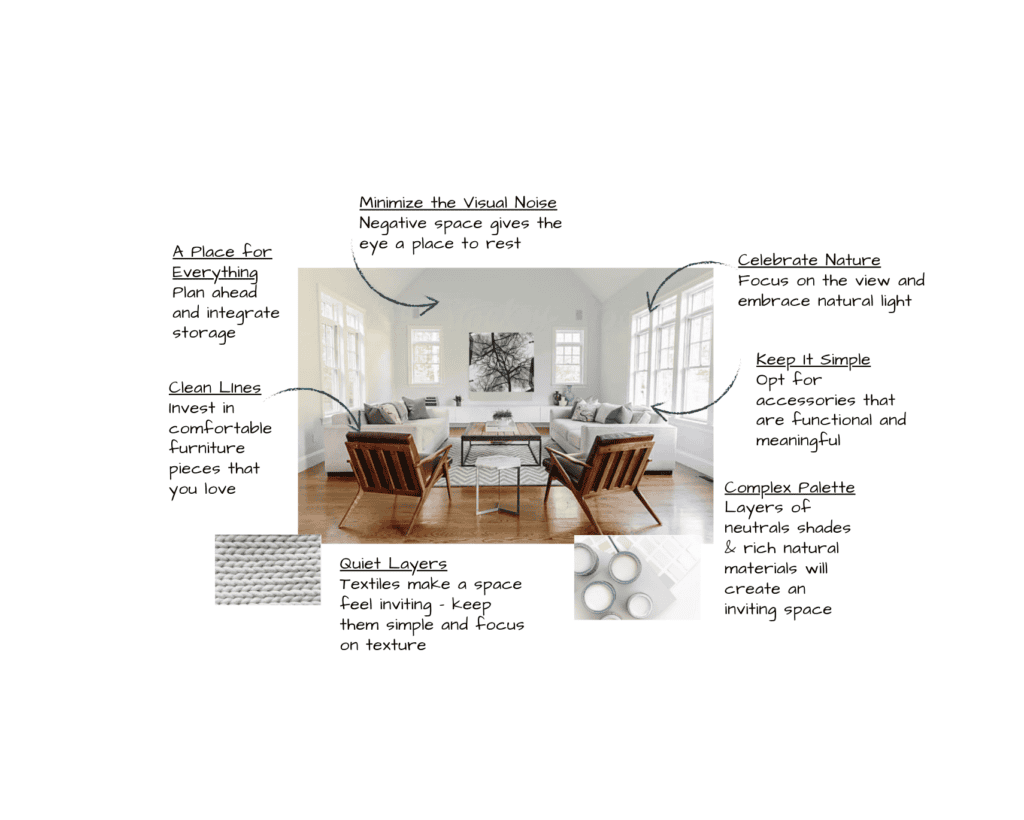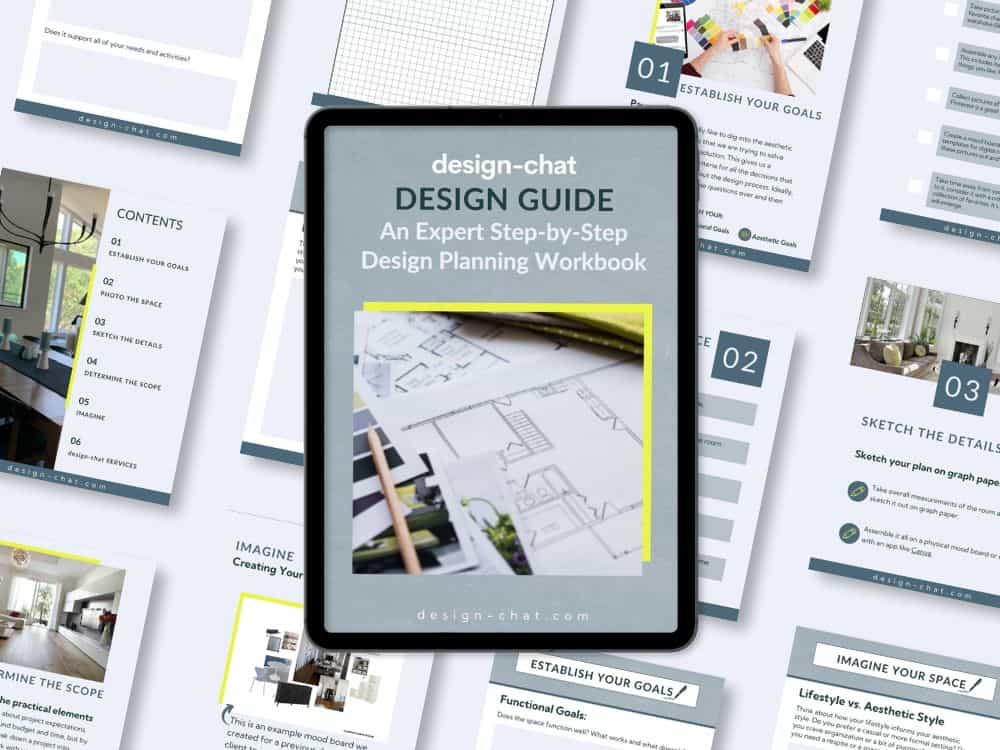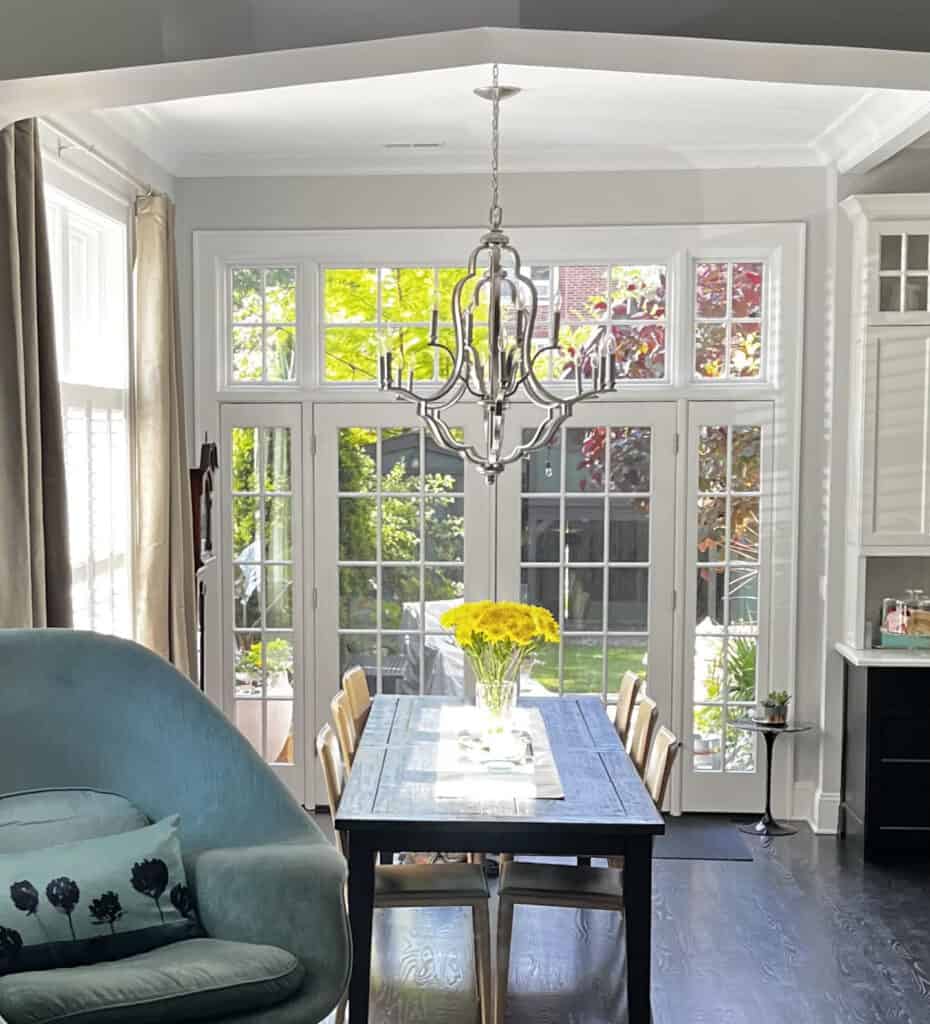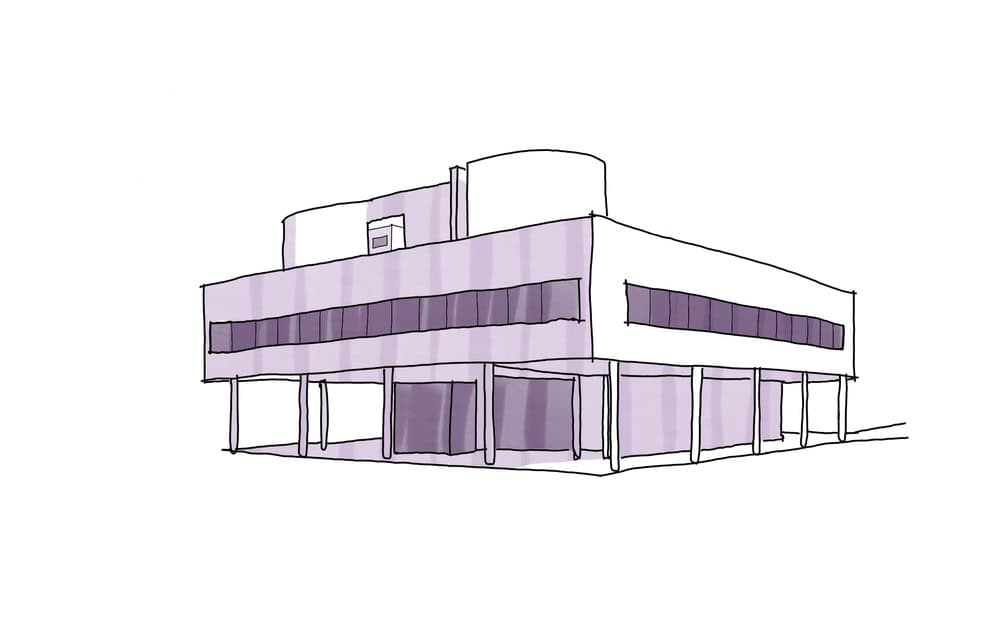
Think of Minimalism as a cold, brutal approach to design? Think again.
Today’s Minimalist trend rejects the severe aesthetic often associated with the style and embraces the eco-friendly mindset of living with less. A generous sprinkle of Scandi cozy creates a warm and inviting atmosphere in your home!
What is Minimalist interior design style?
minimalism (noun): The practice of using the minimum means necessary to achieve a desired result, esp. in literature, design, etc. (Oxford English Dictionary)
Minimalist design principles are resurging in popularity as we gravitate toward simpler lives with less noise. While the Minimal aesthetic of the past is often associated with a stark, cold look, today’s trend is a more zen approach that follows the ethos of the Modern movement, promoting a sense of order and efficiency.
The Modernist’s “Less is More” mantra aligns perfectly with today’s trend of living with less and our love of Scandi-design, a style also rooted in Modernism.
Whether designing a building, an interior, or a piece of furniture, Modernists always started with function and let the form follow. They celebrated the beauty of natural materials and the elegance of clean lines and rich colors.
Modern Minimalism takes functional design to the next level, acknowledging that our homes are not only “machines for living,” a favorite Modernist mantra, but also comfortable respites from the noise of our current lives.
The fundamental principles of Modern Minimalism include focusing on function, using less, minimizing visual noise, celebrating clean lines, and embracing natural materials to create living spaces that are comfortable and inviting respites from the world.
Benefits of Minimalist interior design beyond the aesthetic appeal
Modern Minimalism isn’t just an aesthetic style; it’s also a lifestyle choice that takes cues from the popular “Living With Less” movement and the simplicity of Scandinavian design.
The Living With Less movement champions the belief that a life with less stuff and all of the stress associated with acquiring and maintaining that stuff is better for our mental health and the environment. It encourages a mindful approach to consumption and, like the Modernists, focuses on quality over quantity and the value of experiences over possessions.
Scandinavian design reflects these same values, emphasizing simplicity, natural materials, and a purposefully inviting and comfortable feel. This design style is not just about aesthetics but also about creating a space that makes you feel at ease, welcomed, and truly at home.
Is the Minimalist style right for you?
Modern Minimalism appeals to anyone who loves a simplified aesthetic, appreciates good design, and is interested in a more eco-conscious style. It’s a practical and efficient choice for creating a beautiful and functional space.
If you’re starting your design journey and have yet to acquire much, embracing the Minimalist style is a great way to design your space on a budget. It’s about identifying precisely what items support your lifestyle and slowly finding pieces you love as your budget allows.
Conversely, if you’re feeling overwhelmed by the stuff you’ve accumulated over time and craving a streamlined aesthetic, the principles of Minimalism can guide you to simplify your space. In this case, the first step is a good edit.
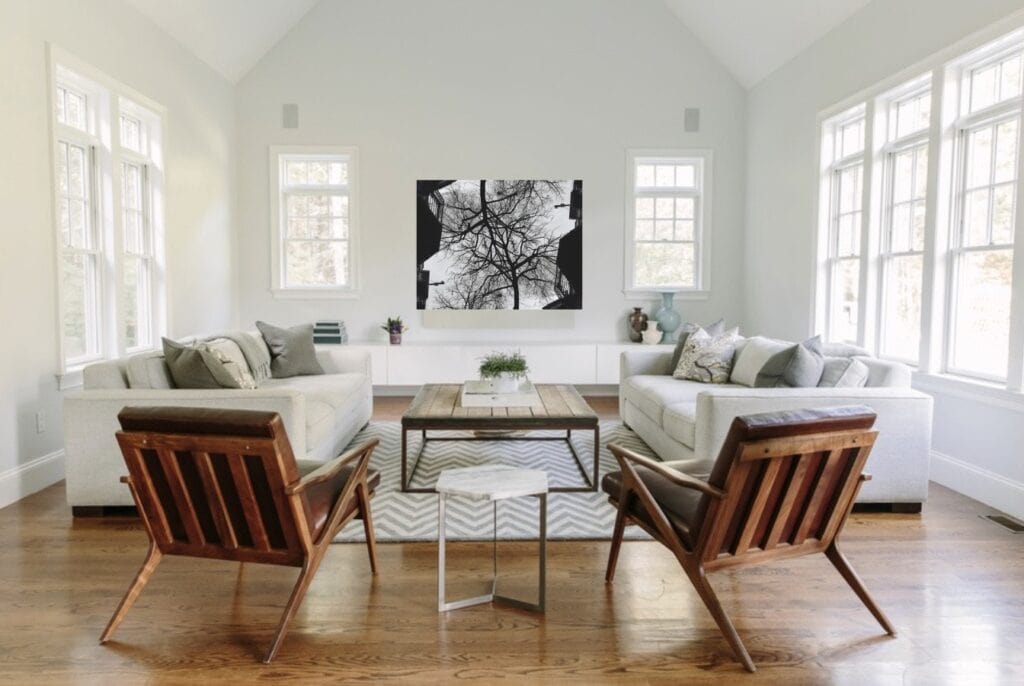
Essential elements of the Modern Minimalist design aesthetic
With a design focused on Minimalism, there are fewer decisions to make, which means that more consideration must be given to every detail to achieve the desired effect. Always follow the basic principles of good design. Read our blog “7 Principals of Interior Design” for a quick refresher.
When considering your design, remember that Modern Minimalism aims to create a simplified space using “less” that is also a comfortable and inviting respite.
Layout
Although an open floor plan is commonly associated with the Minimalist style, it can also be applied to a more traditional plan. The key is ensuring the design elements are consistent throughout your home.
Create a list of only the items the space needs to function (hint: function includes utility and comfort!).
Embrace negative space in the plan, leaving plenty of room for flow.
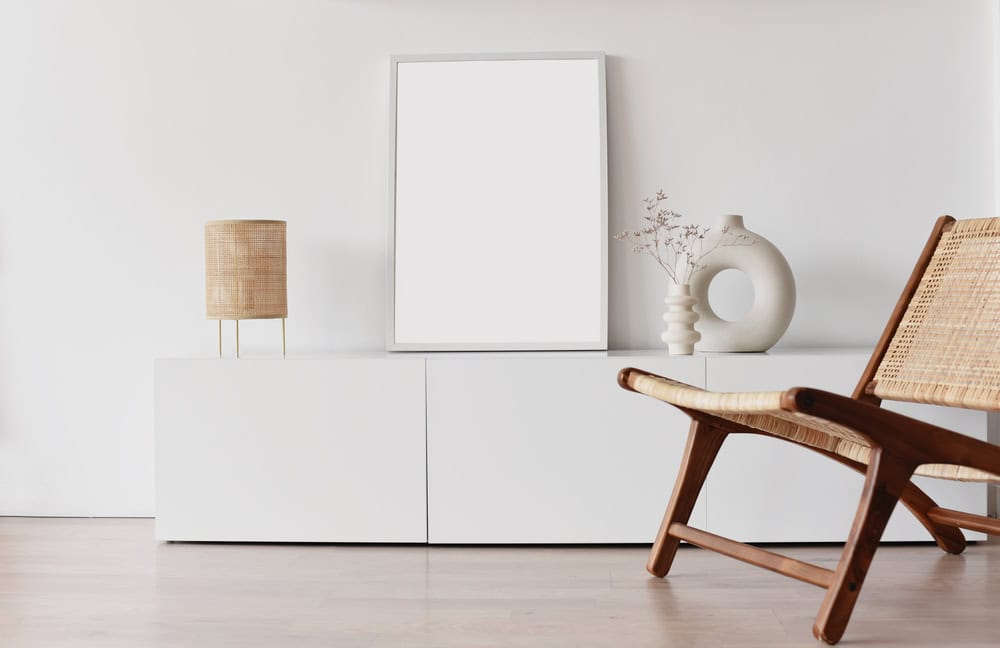
Storage
Even in the most pared-down home, necessary stuff accumulates. Plan to minimize the visual clutter by ensuring everything has a purpose and a place.
Integrate storage into the initial layout.
Select storage solutions that will blend with the space and minimize the noise.
Baskets and boxes are a great way to contain clutter and reduce clutter.
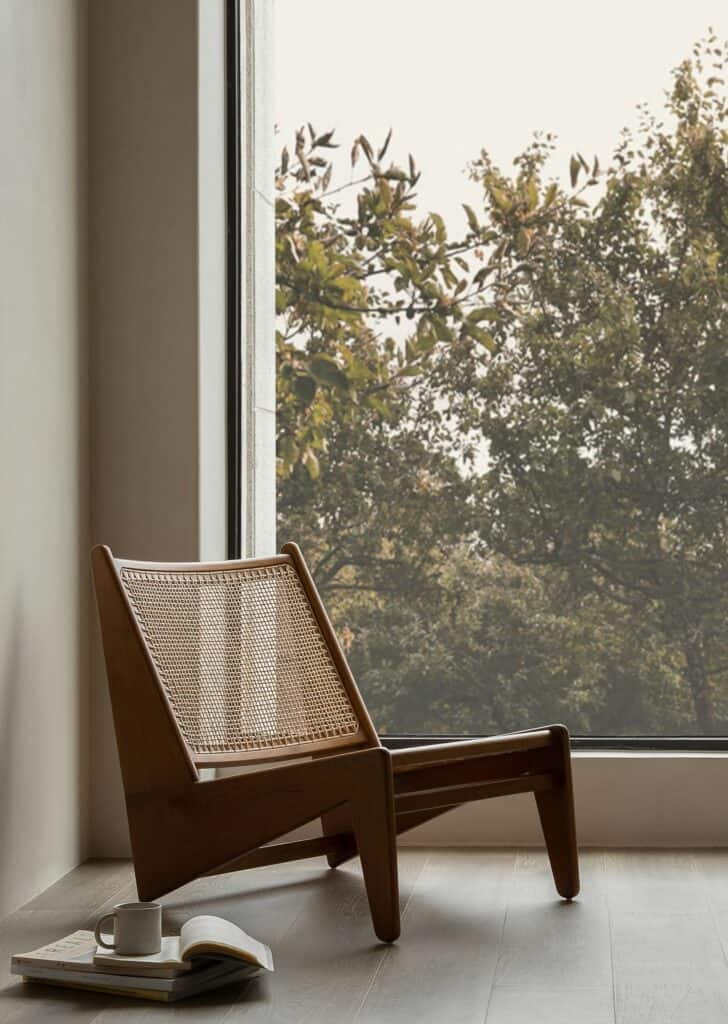
Furniture
Invest in quality pieces that support your life and reflect your style.
Select well-crafted pieces.
Choose items that are well-designed with simple, elegant lines.
Opt for natural materials.
Choose timeless items over trendy options.
Lighting
The Modernists believed in integrating nature with the built environment, which is also a central theme of the Scandi style.
Focus on the view (when possible).
Embrace natural light.
Select light fixtures that will complement the natural light throughout the seasons.
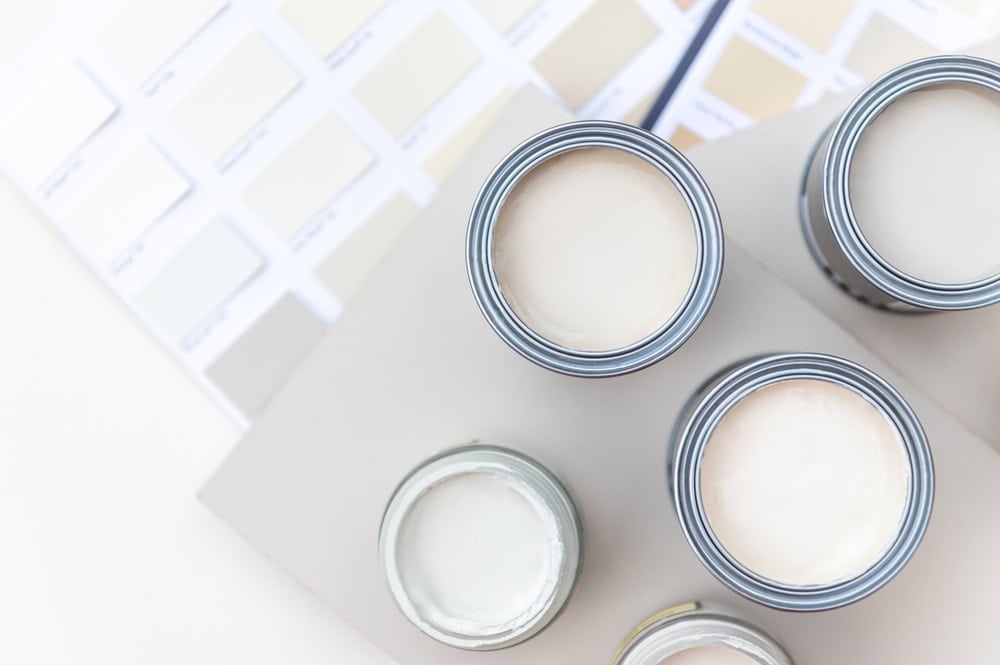
Color Palette
While it’s common to think of Minimalist spaces as monochromatic, it’s good to introduce a bit of color and contrast to make the space interesting. The key is to create a harmonious palette with subtle complexity to minimize the visual noise.
Integrate color through interesting natural materials and textures like wood, stone, and textiles.
Layering whites with warm and cool neutrals will make the space feel sophisticated.
Use more vivid and rich tones sparingly to create focal points and minimize contrast.
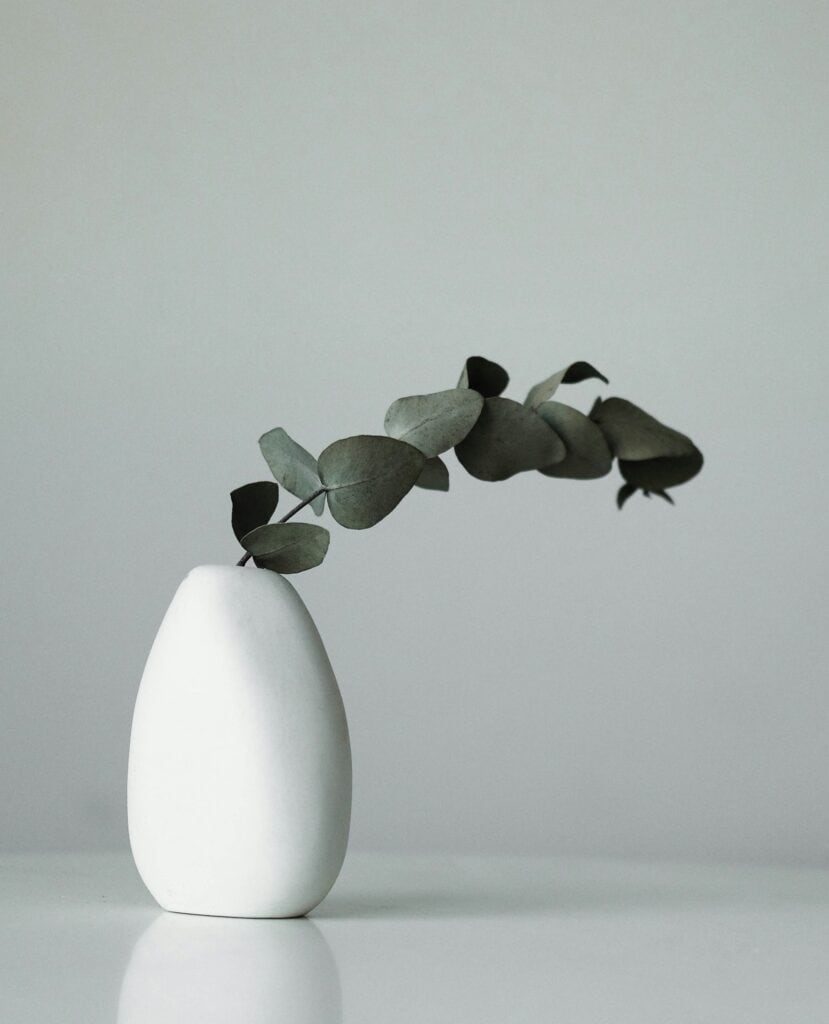
Accessories and Decor
The spirit of Minimalist decor is all about choosing functional accessories over purely decorative objects. Select pieces that you love and that reflect your life and style. Remember, “less is more,” so focus on fewer meaningful items.
Pillows, throws, and drapes are all functional items that help make a space more inviting.
Objects like candles and vases also serve a purpose and create interest in a space.
Artwork
Like with accessories, when it comes to artwork, “less is more.” Select pieces that quietly draw attention as opposed to loud and contrasting themes.
Keep the frames simple.
A series of artwork pieces with matching frames can create a quiet background texture.
Black and white photography is an easy way to showcase your interests.
Tips for achieving a Modern Minimalist look in your home (Room by Room)
Modern Minimalist style easily integrates all of the spaces in a home.
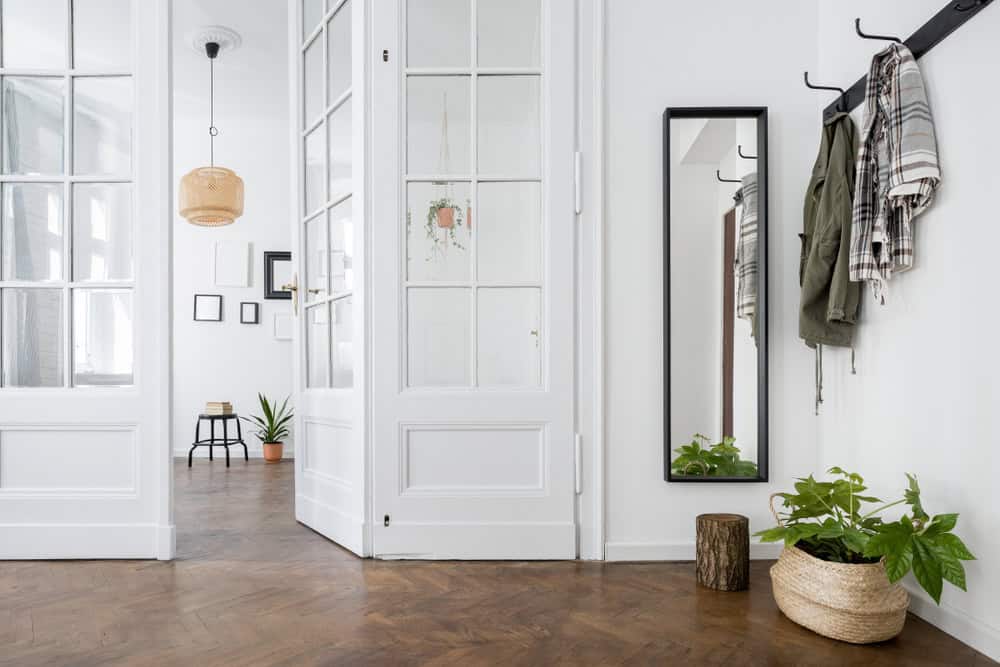
Foyer
Set the tone for your entire home in this space by creating an orderly and calm respite. Provide a thoughtful storage solution for all categories of stuff (coats, bags, shoes, umbrellas, mail, keys, etc).
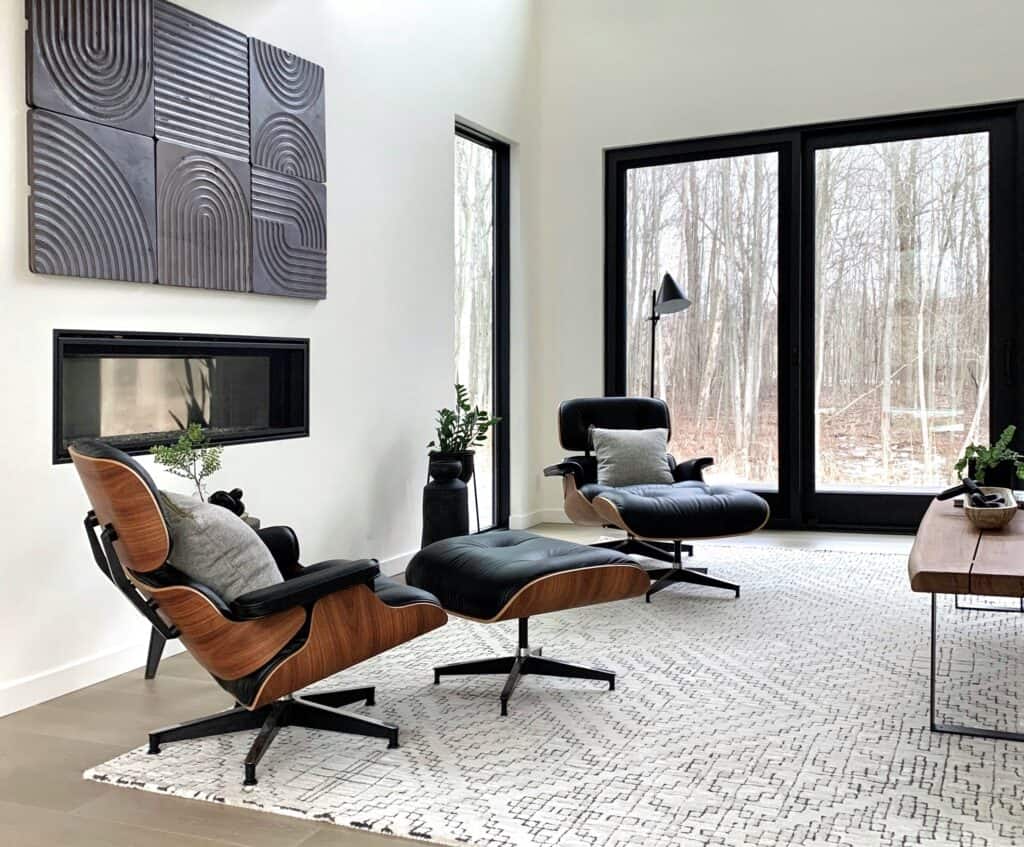
Living Room
Our modern-day living rooms often serve multiple functions, accommodating family time, work, and entertaining. The key to maintaining a Minimal multi-purpose living room is to select flexible furniture and integrate plenty of storage.
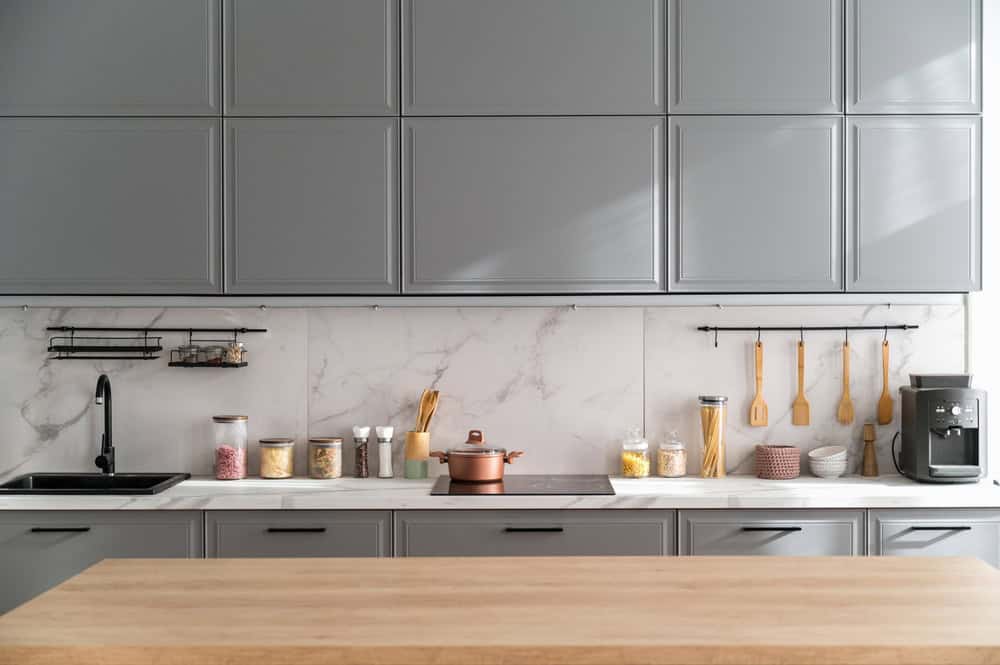
Kitchen
A streamlined kitchen is trendy, but if you love cooking, the focus should be on function. Create a layout that best supports your work style, assuring that the items you use frequently are easily accessible. Minimalism doesn’t require that the tools be hidden away; it requires that they be well organized to minimize visual chaos.
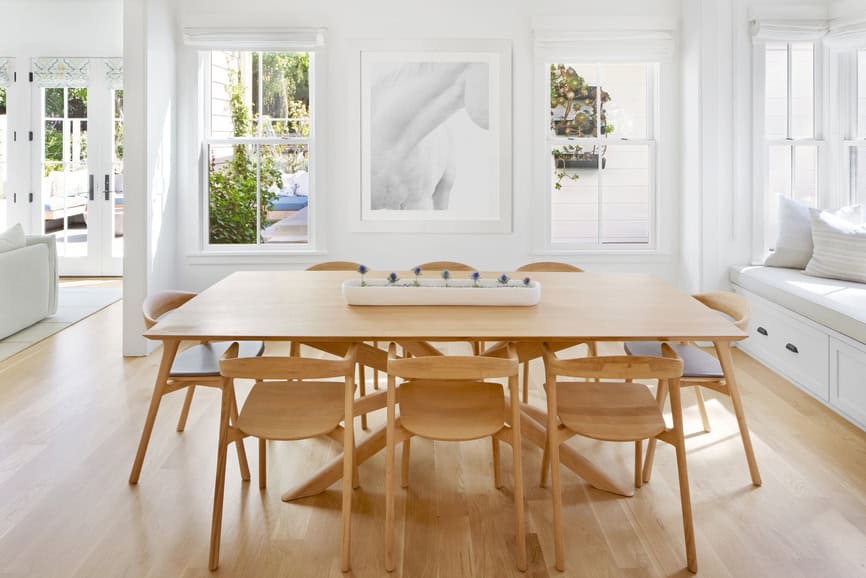
Dining Room
This is the most effortless room to decorate, as its function is very straightforward. We like to create a quiet, comfortable backdrop, focusing on the table, serving pieces, and food.
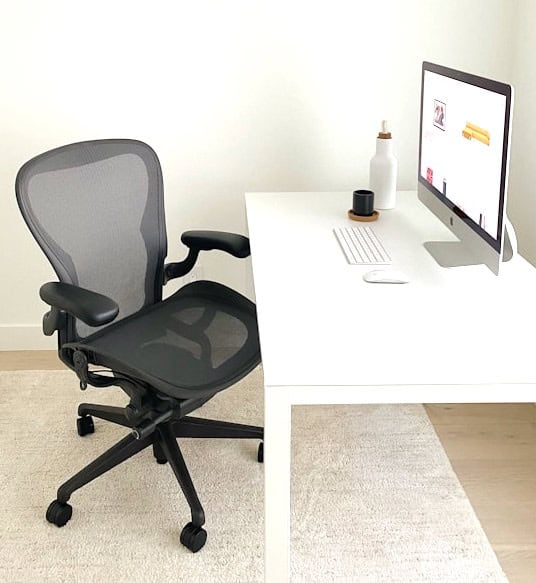
Home Office
The Modern Minimalism style works particularly well with the home office, encouraging a well-organized and neutral backdrop focusing on work. Invest time selecting storage items that support your work style and highly functional, well-designed ergonomic furniture pieces.
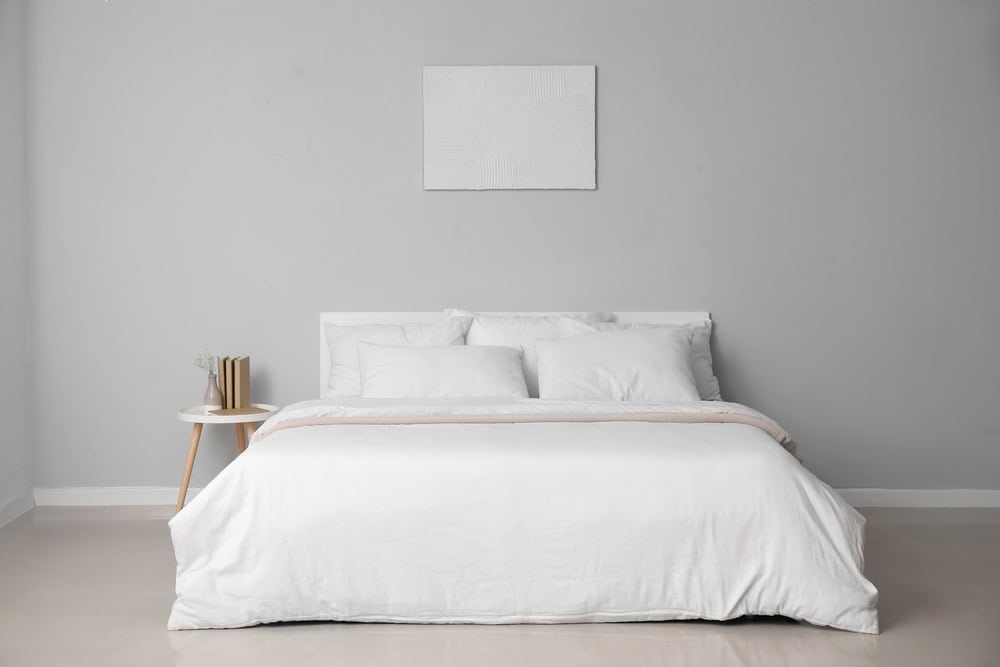
Bedroom
This is a space where Minimalism is at its best. We have all read the literature telling us that a space to sleep separate from all of the visual noise of our lives is ideal. We suggest stripping this space to the barest elements, focusing solely on serenity and sleep!
*Note: If the bedroom has a dual function like a home office, opt for a desk area that can be located behind a curtain or in an armoire that closes when not in use.
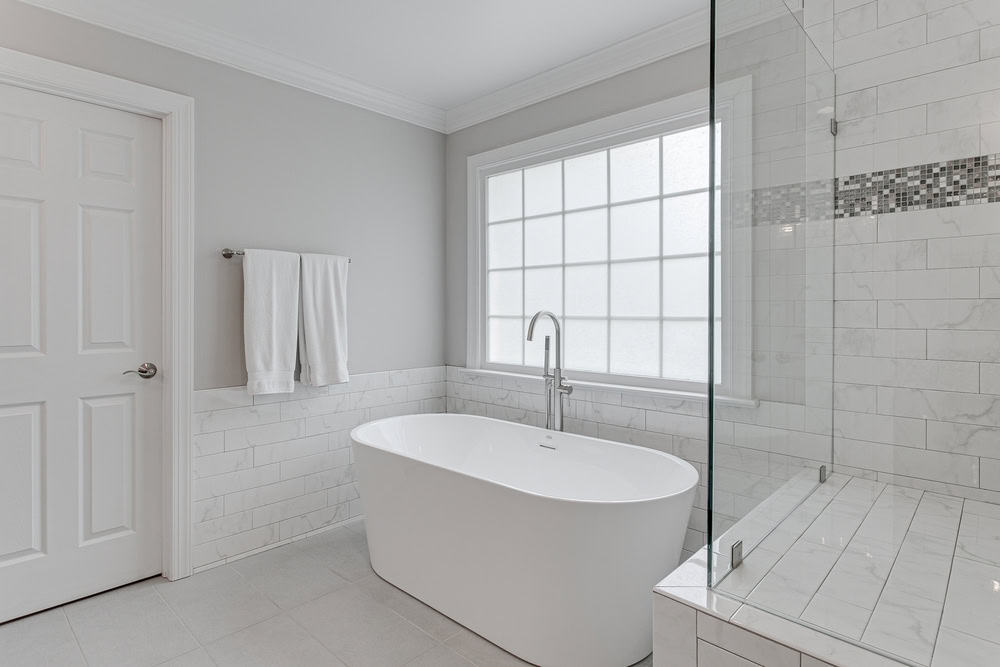
Bathroom
It’s easy to imagine the perfect zen minimalist bathroom. Still, suppose you’re integrating less-than-perfect fixtures and finishes into a minimalist design. In that case, keep it simple by neutralizing the space as much as possible. Hide tubs behind floor-to-ceiling flat panel drapes, paint wall tile (not in wet zones), and camouflage less-than-ideal floors with textural rugs.
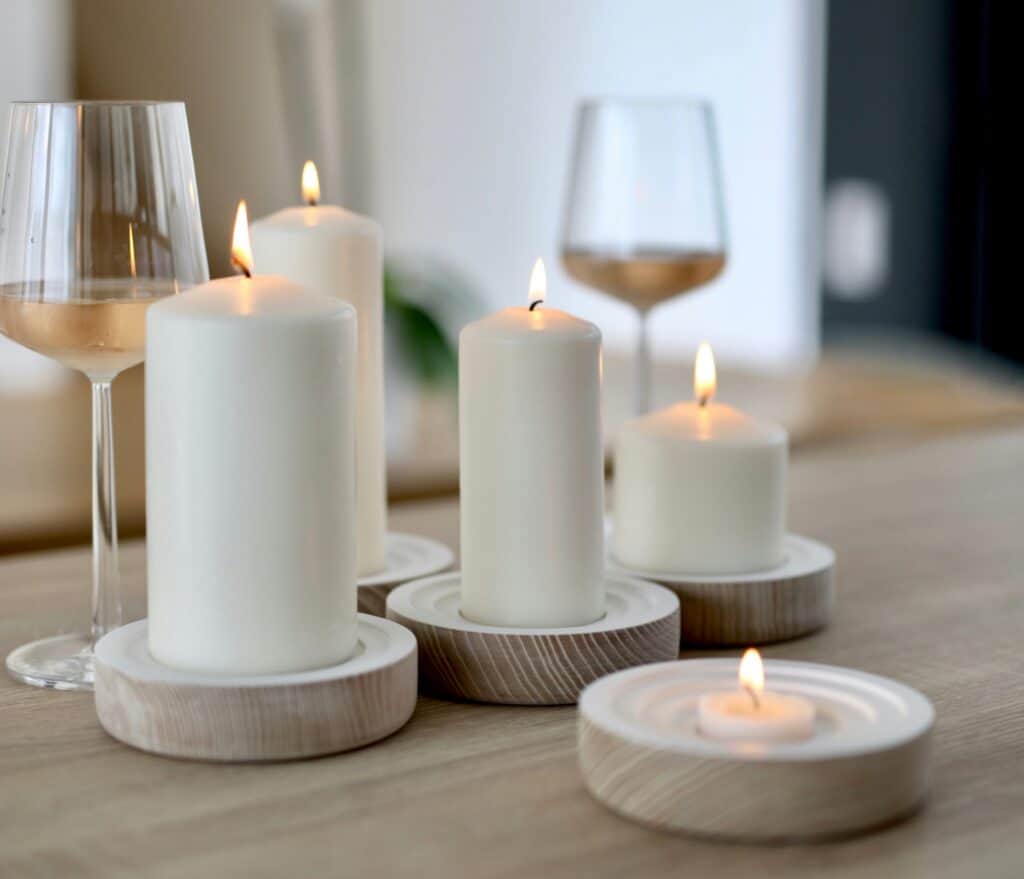
Maintaining a Minimalist Interior Design in Your Home
Any successful home design will be able to evolve with our lifestyle and needs, and this is especially true when you are designing a Minimal space. It’s easy for a space with less stuff to feel flat occasionally, so we suggest planning for some regular adjustments to keep it interesting.
Consider creating a deliberate plan to edit or add layers to a space as the seasons change. A space flooded with light and warmth in the summer may feel perfect with bare floors and windows but feel visually cold in the winter months. Create a plan to add these layers and accessories like pillows, throws, and candles as the seasons change.
We also like to have a few elements in the room that are constantly changing, like vases of seasonal flowers or branches. If you’re integrating some personal artwork, it’s also a nice touch to use flexible frames and change these items occasionally.
Clutter-free, Minimalist living in your Minimalist home
One final thought if you’re still feeling daunted by the idea of embracing a more Minimalist style:
As we discussed earlier, there is a certain amount of stuff that we all require to function, but the key is to keep focused on the idea that everything should have a purpose and a place. Creating this level of organization in your home will transform it into a calming, uncluttered respite from the world.
Start with a good edit in one room and see how it goes!
